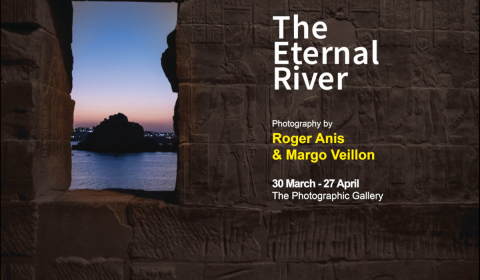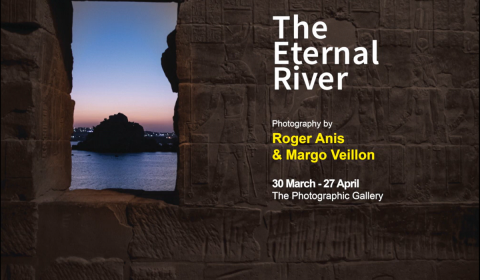The Eternal River
The Eternal River
March 27 - May 31, 2022
The Photographic Gallery, AUC's Rare and Special Books Collection (RBSCL) and the Center for Applied Research on the Environment and Sustainability (CARES) have collaborated to present The Eternal River, a cultural program dedicated to the Nile. In this program, we looked at the Nile River through archival images alongside contemporary photography to bring to the fore the hydro-politics of this natural wonder.
Dating back to Pharaonic Egypt, a long tradition continues to this day that inspires artists, both Egyptian or foreign, to be inspired by this vast waterway in North-Eastern Africa. The Nile River has been a key compositional element featured in the murals of ancient Egypt, and later seen in paintings, photographs, as a backdrop to films and as a silent protagonist in literary narratives.
The Eternal River exhibition brought together a selection of archival photographs of the Nile shot between the 1950s and 1970s by Swiss painter Margo Veillon and contemporary photography by Egypt’s emerging photojournalist Roger Anis on the river. The exhibition featured a series of landscape photographs with striking compositions depicting water and land textures, colors, life and activity on the Nile banks. The exhibition was also an intersection between local and foreign gazes and connecting the past with the present.
The Nile has played a key developmental role in Egypt’s history from the Delta basin to Upper Egypt as the population grew on its shores. It remains to be the lifeline of Egypt, providing 95% of this desert country’s water. In light of the rising tensions between riparian countries over the construction of the Grand Ethiopian Renaissance Dam (GERD) and the recent filling of the dam’s reservoirs, the exhibition program included a panel discussion by experts in water diplomacy who discussed the dispute and the ramifications of GERD on Egypt’s water supply and environmental consequences and to raise questions about the future.
Co-Curated by
- Dina ElDeeb, curator, The Photographic Gallery
- Ola Seif
The Photographers
Roger Anis
Roger Anis, born in Egypt in 1986, began his career as a photojournalist with Shorouk newspaper in 2010 before working on personal photo essays exploring issues of social change within different communities in Egypt. A recipient of several grants and awards, including the World Press Photo grant (2013), Reuters Microsoft Mobile Photo award (2014) and UNICEF Photo of the Year (2015) among others, his work has been widely published and exhibited in international and local festivals and biennales. Currently, Anis is experimenting with different visual mediums that he can combine with his photography and is expanding into filmmaking.
Margo Veillon
Margo Veillon (1907-2003) was born in Cairo to a Swiss father and an Austrian mother. She spent her secondary education at a boarding school in Zurich, Switzerland and returned to Cairo in 1924 to pursue a career in art where she spent much of her artistic career capturing the vitality and movement of daily life in Egypt. For many years, Veillon has traversed the Egyptian villages, seas, deserts and neighboring countries, exploring their visual secrets, glare and subtle colors and documenting them through her lens, brush, pen, ink, watercolors and oils. Towards the end of her life, she bequeathed to The American University in Cairo her estate and works where they are housed at the Rare and Special Books Collection (RBSCL) . The current exhibition of handpicked black and white photographs is a set revolving around the Nile theme. She photographed them between the 50s and mid-70s to use as a basis for her paintings.
The Panelists
Hani Sewilam
Hani Sewilam is both the founding director of the Center for Applied Research on the Environment and Sustainability at AUC and the director of UNESCO Chair in Hydrological Changes and Water Resources Management at the RWTH Aachen University in Germany. He is a professor of water resources and sustainable development. He coordinated capacity-building programs of the United Nations Water between 2009 and 2011.
Doris Jones
Doris Jones is working to develop an Archival Literacy Education program at AUC. She has curated several projects utilizing artifacts from the Rare Books and Special Collections Library (RBSCL) and other cultural organizations in the United States. In addition to Archival Literacy, Jones remains committed to integrating, where possible, water literacy and water diplomacy in her courses. While teaching the “Now You See It” core curriculum course, she utilized case studies such as the Nile River and critically examined the riparian nations that share this major water resource. Visuals, place-based learning and interdisciplinary curricula were used to discuss the future of water and the need for water literacy initiatives. These foci have emerged as a major field of study to foster attitudes and sustainable behaviors to protect the world’s most finite natural resource, water.

